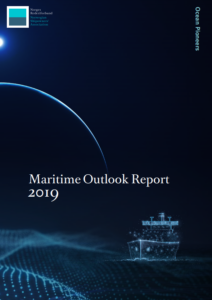Shipowners expect increased profitability and more new employees in 2019, according to the Norwegian Shipowners’ Association’s Outlook Report for 2019. Despite increasingly challenging markets in recent years, both the transport and the offshore sectors expect better profitability in 2019.
Norwegian shipping companies in foreign trade achieved a total turnover of NOK 229 billion in 2018, which is an increase of 11% from 2017. International deep sea shipping companies especially showcased strong growth in 2018, driven by an increase in freight rates in the second half of the year. What is more, 60% of shipowners expect increased revenue in 2019, while 20% expect reduced revenue, with 20% remaining unchanged.
[smlsubform prepend=”GET THE SAFETY4SEA IN YOUR INBOX!” showname=false emailtxt=”” emailholder=”Enter your email address” showsubmit=true submittxt=”Submit” jsthanks=false thankyou=”Thank you for subscribing to our mailing list”]
As for deep sea shipping companies, they are once again the largest group in the Norwegian foreign-going fleet. Their revenue increased notably in 2018 and is expected to total NOK 120 billion in 2019.
Moreover, the results of the member survey show that Norwegian shipping companies’ revenue from markets outside Norway account for 61% of the overall turnover in 2018, or NOK 139 billion.
Regarding short sea shipping, Germany has the largest market, followed by the UK. For deep sea shipowners, the US and China are the most important markets, while Norway and the UK are most important for offshore and rig companies.
However, the report says that the offshore sector anticipates continued challenging markets with a high number of ships in lay-up, prolonged low rates, and relatively short horizons on contracts. A number of years of major cost reductions and efficiency improvements, along with increased consolidation in the supplier industry, have enhanced profitability on the Norwegian shelf. The combination of large cost reductions and a more stable oil price, has led to very good margins for the oil companies.
In addition, the number of ships in lay-up reported its peak during the winter of 2017. As of February 2019, 112 offshore vessels and 20 rigs were in lay-up, in comparison to 137 ships and 25 rigs in February 2018. According to the Norwegian Shipowners’ Association, the figure will reduce to 78 ships and 15 rigs by the end of 2019. This reduction is because of a combination of rising activity on the Norwegian Continental Shelf and sale of ships.
Furthermore, in this year’s member survey, half the shipping companies note that they will renew the fleet through newbuilding over the next five years. Shipowners estimate that they will contract a total of 137 ships and five rigs during that period. The majority of the orders will come in the transport segments, deep sea and short sea shipping. Over 40% of shipping companies, mainly short sea shipowners, believe that Norwegian shipyards are relevant for the construction of new ships.
Harald Solberg, CEO of the Norwegian Shipowners’ Association, said:
The short sea sector is poised for extensive fleet renewal. This is a tremendous opportunity to develop and implement new technology that will give us a more environmentally friendly and competitive short sea shipping fleet, at the same time as we develop technology for export to larger markets
Continuing, the report mentions that Norwegian shipowners, offshore enterprises and supplier companies are well positioned to take a more important role in the renewables market, including offshore wind. Specifically, three out of ten shipping companies are active in the offshore wind market today.
Additionally, 27% of shipping companies consider the offshore wind market to be interesting for their business over the next five years. Among offshore service companies, 55% consider activity in the offshore wind market over the next five years.
Finally, 18% of shipping companies report that they consider the aquaculture industry to be of interest in the next five years, with 14% saying the same about subsea mining.
For further details, click the PDF herebelow































































